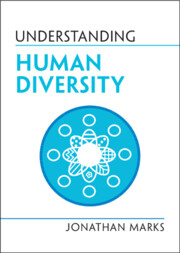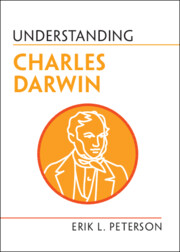Refine search
Actions for selected content:
43 results
9 - The Failure of Constitutional Reforms and Republican Revolution
-
- Book:
- Institutional Genes
- Published online:
- 03 June 2025
- Print publication:
- 26 June 2025, pp 392-448
-
- Chapter
- Export citation
11 - Race-Thinking, Völkisch-Nationalism, and Eugenics
-
-
- Book:
- The Cambridge History of the Holocaust
- Published online:
- 16 May 2025
- Print publication:
- 12 June 2025, pp 220-247
-
- Chapter
- Export citation
A Race to War: Japanese Public Intellectuals and Racial Explanations of the Russo-Japanese War
-
- Journal:
- Asia-Pacific Journal / Volume 18 / Issue 19 / October 2020
- Published online by Cambridge University Press:
- 14 March 2025, e4
-
- Article
-
- You have access
- Open access
- Export citation
Chapter 3 - The Utopian (R)Evolutionism of Grant Allen and Oscar Wilde
-
- Book:
- Evolutionary Aestheticism in Victorian Culture
- Published online:
- 05 December 2024
- Print publication:
- 12 December 2024, pp 85-121
-
- Chapter
- Export citation
8 - Social Evolutionism
-
- Book:
- Evolution for the People
- Published online:
- 21 November 2024
- Print publication:
- 28 November 2024, pp 186-216
-
- Chapter
- Export citation
How can you help us, Mr Darwin? Social Darwinism in the history of Chinese international thought
-
- Journal:
- Review of International Studies / Volume 51 / Issue 2 / March 2025
- Published online by Cambridge University Press:
- 16 October 2024, pp. 237-255
- Print publication:
- March 2025
-
- Article
-
- You have access
- Open access
- HTML
- Export citation

Understanding Human Diversity
-
- Published online:
- 31 August 2024
- Print publication:
- 04 July 2024
Blue Gums, Black Bodies, White Supremacy: Narratives of Racial Contagion in the Late Nineteenth Century
-
- Journal:
- The Journal of the Gilded Age and Progressive Era / Volume 23 / Issue 3 / July 2024
- Published online by Cambridge University Press:
- 29 October 2024, pp. 267-289
- Print publication:
- July 2024
-
- Article
-
- You have access
- Open access
- HTML
- Export citation
Chapter 2 - Racializing Irish Historical Consciousness
-
-
- Book:
- Race in Irish Literature and Culture
- Published online:
- 04 January 2024
- Print publication:
- 18 January 2024, pp 42-58
-
- Chapter
- Export citation
9 - Layering Law and Resistance in the Great Strikes
- from Part III - Modern Traditions
-
- Book:
- Born in Blood
- Published online:
- 18 January 2024
- Print publication:
- 18 January 2024, pp 217-241
-
- Chapter
- Export citation
3 - London Calling, 1836–1842
-
- Book:
- Understanding Charles Darwin
- Published online:
- 31 August 2023
- Print publication:
- 14 September 2023, pp 51-66
-
- Chapter
- Export citation
5 - “[T]his view of life, with its several powers”
-
- Book:
- Understanding Charles Darwin
- Published online:
- 31 August 2023
- Print publication:
- 14 September 2023, pp 97-125
-
- Chapter
- Export citation
7 - The Struggle Is Real
-
- Book:
- Understanding Charles Darwin
- Published online:
- 31 August 2023
- Print publication:
- 14 September 2023, pp 147-169
-
- Chapter
- Export citation
Concluding Remarks
-
- Book:
- Understanding Charles Darwin
- Published online:
- 31 August 2023
- Print publication:
- 14 September 2023, pp 170-178
-
- Chapter
- Export citation
4 - Darwin–Wallaceism
-
- Book:
- Understanding Charles Darwin
- Published online:
- 31 August 2023
- Print publication:
- 14 September 2023, pp 67-96
-
- Chapter
- Export citation
2 - The Truth About Atolls
-
- Book:
- Understanding Charles Darwin
- Published online:
- 31 August 2023
- Print publication:
- 14 September 2023, pp 31-50
-
- Chapter
- Export citation
1 - The Evolutionary Darwins, 1794–1835
-
- Book:
- Understanding Charles Darwin
- Published online:
- 31 August 2023
- Print publication:
- 14 September 2023, pp 5-30
-
- Chapter
- Export citation
6 - Saint Charles’s Place
-
- Book:
- Understanding Charles Darwin
- Published online:
- 31 August 2023
- Print publication:
- 14 September 2023, pp 126-146
-
- Chapter
- Export citation
Introduction: The Legends of Charles Darwin
-
- Book:
- Understanding Charles Darwin
- Published online:
- 31 August 2023
- Print publication:
- 14 September 2023, pp 1-4
-
- Chapter
-
- You have access
- HTML
- Export citation

Understanding Charles Darwin
-
- Published online:
- 31 August 2023
- Print publication:
- 14 September 2023
